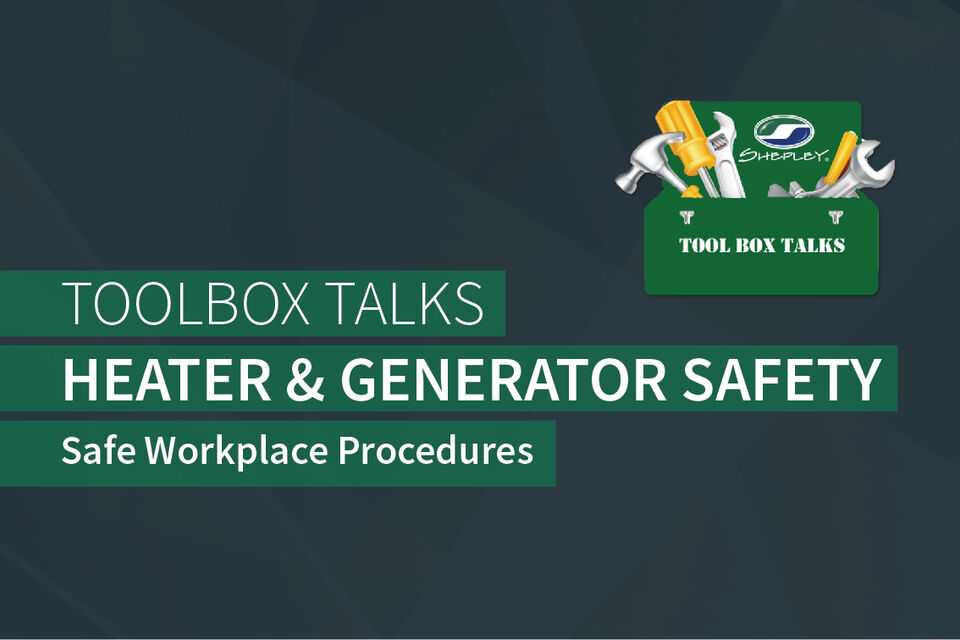Heaters and generators that use organic materials for fuel, such as natural gas or propane, can emit carbon monoxide (CO) if the heater or generator is not working properly or not properly tuned up, allowing for incomplete combustion.
CO is a chemical asphyxiate: it takes the place of oxygen in red blood cells and can be fatal.
The following safe work procedures should be implemented:
- Follow an effective testing and preventative maintenance program on all equipment using carbon-based fuels (e.g., gasoline, natural gas, or propane).
- A hardwired CO detector is required when carbon based fuels are used in poorly ventilated areas. They must be calibrated and tested regularly and must contain proper concentration set points for alarm systems (e.g., 150 ppm for a single alarm and 100/200 ppm for dual alarm systems).
- Follow all manufactures’ instructions for unit use, service, and inspection. Keep records of all maintenance.
- Employers must select only units with sealed heating elements. When purchasing gas equipment, buy only equipment carrying the seal of a national testing agency, such as the American Gas Association or Underwriters’ Laboratories.
- Know symptoms of CO poisoning and necessary responses to take if leakage is suspected.
- Only use preapproved equipment, and only use it in areas with sufficient ventilation.
- If a heater is suspected of a leak or incomplete combustion: Evacuate, report to your supervisor, and take the heater out of service and red tag, following lockout/tagout procedures.
- As much as possible, exhaust must be directed outside the building or there should be sufficient airflow ventilation within the work environment. Never use the following equipment indoors or in enclosed areas:
– Portable, open flame heaters
– Flameless chemical heaters
– Gas-powered space heaters
– Generators
– Any unit that exhausts into the work environment
